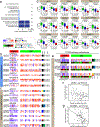Characterization of the CpG Island Hypermethylated Phenotype Subclass in Primary Melanomas
- PMID: 34843679
- PMCID: PMC9135958
- DOI: 10.1016/j.jid.2021.11.017
Characterization of the CpG Island Hypermethylated Phenotype Subclass in Primary Melanomas
Abstract
Cutaneous melanoma can be lethal even if detected at an early stage. Epigenetic profiling may facilitate the identification of aggressive primary melanomas with unfavorable outcomes. We performed clustering of whole-genome methylation data to identify subclasses that were then assessed for survival, clinical features, methylation patterns, and biological pathways. Among 89 cutaneous primary invasive melanomas, we identified three methylation subclasses exhibiting low methylation, intermediate methylation, or hypermethylation of CpG islands, known as the CpG island methylator phenotype (CIMP). CIMP melanomas occurred as early as tumor stage 1b and, compared with low-methylation melanomas, were associated with age at diagnosis ≥65 years, lentigo maligna melanoma histologic subtype, presence of ulceration, higher American Joint Committee on Cancer stage and tumor stage, and lower tumor-infiltrating lymphocyte grade (all P < 0.05). Patients with CIMP melanomas had worse melanoma-specific survival (hazard ratio = 11.84; confidence interval = 4.65‒30.20) than those with low-methylation melanomas, adjusted for age, sex, American Joint Committee on Cancer stage, and tumor-infiltrating lymphocyte grade. Genes hypermethylated in CIMP compared with those in low-methylation melanomas included PTEN, VDR, PD-L1, TET2, and gene sets related to development/differentiation, the extracellular matrix, and immunity. CIMP melanomas exhibited hypermethylation of genes important in melanoma progression and tumor immunity, and although present in some early melanomas, CIMP was associated with worse survival independent of known prognostic factors.
Copyright © 2021 The Authors. Published by Elsevier Inc. All rights reserved.
Conflict of interest statement
CONFLICT OF INTEREST STATEMENT
The authors state no conflict of interest.
Figures





Comment in
-
Prognostic Utility of CpG Island Hypermethylated Phenotype in Early-Stage Invasive Primary Melanomas.J Invest Dermatol. 2022 Jul;142(7):1770-1772. doi: 10.1016/j.jid.2021.12.013. Epub 2022 Jan 11. J Invest Dermatol. 2022. PMID: 35031134 No abstract available.
References
-
- Abe M, Ohira M, Kaneda A, Yagi Y, Yamamoto S, Kitano Y, et al. CpG island methylator phenotype is a strong determinant of poor prognosis in neuroblastomas. Cancer Res 2005;65(3):828–34. - PubMed
-
- AmericanCancerSociety. Cancer Facts & Figures 2020. Atlanta: American Cancer Society; 2020.
Publication types
MeSH terms
Grants and funding
LinkOut - more resources
Full Text Sources
Medical
Research Materials

